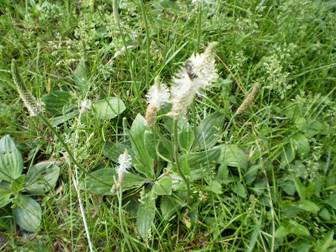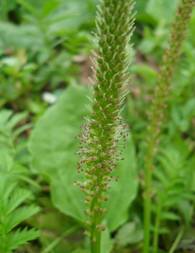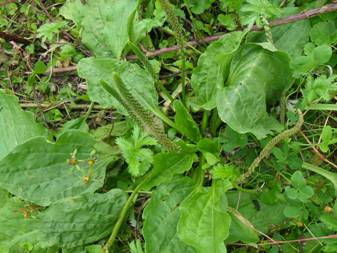


Plantain (Plantago), fam. Plantaginaceae. (Don't confuse this herb with green bananas used for cooking!)
There are two species in the forest – Broadleaf (common, greater) Plantain (Plantago major) and Ribwort Plantain (Plantago lanceolata). Their leaves are edible but too tough. The first species, broadleaf plantain, is also a city weed; and in the forest it only occurs along the roads, which again creates a problem for those who want to use this plant somehow. It is hardly possible to find in ecologically clean areas.
The preparations from plantain leaves have mucolytic, painkiller, blood-stopping, wound-healing, bacteriostatic, sedative (including sleep-promoting), hypotensive and antiallergic action. A decoction from plantain leaves is prescribed at bronchitis, lung tuberculosis, whooping cough, pneumonia, and other respiratory diseases involving the production of viscous secrete, at stomach catarrh with unsufficient acidity, acute gastrointestinal diseases (gastritis, enteritis, enterocolitis), acute and chronic colitis, chronic nephritis and ulcer disease. Fresh leaves are applied to ulcers, wounds, boils, burns, bruises, cuts and abscesses. Fresh juice is a strong vitamin-containing, general tonic remedy.
The second species, Ribwort Plantain, is featured by elongated leaves and less attachment to the roads.